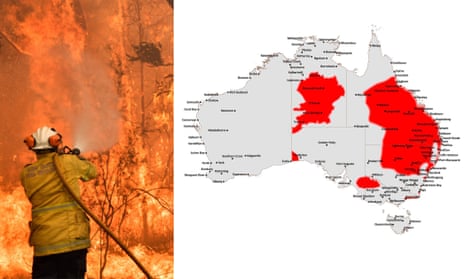Past Compliance: Enhancing Residential Property Safety with a Thorough BAL Report Analysis
Ensuring Bush Fire Protection With Proper BAL Record Analysis
In the world of bush fire security, the meticulous analysis of Bushfire Strike Level (BAL) reports stands as a cornerstone for safeguarding residential properties against the disastrous impact of wildfires. With ecological variables and building features playing substantial roles in identifying the level of danger, a thorough understanding of BAL ratings ends up being important. The genuine essence lies not simply in understanding these reports however in decoding them efficiently to develop customized fire defense methods. By delving right into the value of BAL record evaluation, we uncover a world where notified decisions pave the course in the direction of strengthening property safety and strength in fire-prone regions.
Recognizing Bushfire Strike Level (BAL)
In the world of bushfire defense, understanding the Bushfire Strike Level (BAL) is critical for making certain efficient mitigation strategies. Understanding the BAL rating of a home is essential for building owners, policymakers, and contractors to implement suitable procedures to secure against bushfire hazards.

Significance of BAL Record Analysis
A necessary element in bushfire protection planning involves the thorough evaluation of BAL records to analyze the potential risks and figure out suitable reduction techniques. BAL reports offer essential info about the possible impact of bushfires on a property based on various elements such as greenery type, range to potential fire threats, and slope of the land. Evaluating these reports with accuracy is extremely important in developing effective bushfire defense steps tailored to the certain threat account of a residential property.
Applying Fire Defense Measures
Implementing effective fire defense measures is vital for securing homes in bushfire-prone locations. One of the primary ways to improve fire protection is by developing defensible area around buildings. This entails cleaning combustible plant life, such as dry fallen leaves and branches, within a specific radius of the residential or commercial property. In addition, mounting fire-resistant roof covering materials can help lower the threat of embers firing up the roofing throughout a bushfire. Properly kept seamless gutters and displays are likewise vital to prevent particles buildup that can fuel a fire.
In addition, having a properly maintained and ample water supply, such as a container or pool, can help firemans in their initiatives to shield the residential or commercial property. BAL Report. Generally, carrying out a combination of these fire security steps can dramatically raise the chances of protecting residential properties throughout bushfire events.
Mitigating Risks in Fire-Prone Areas
To fortify homes versus bushfire hazards, a strategic concentrate on mitigating risks in fire-prone locations is crucial. Mitigating dangers in fire-prone areas involves an extensive strategy that incorporates various actions to minimize the probability and influence of bushfires. One crucial facet of threat reduction is maintaining defensible room around residential properties by clearing flammable greenery, ensuring appropriate spacing in between trees and structures, and employing fireproof landscape design methods. Additionally, carrying out ember-proofing procedures such as installing metal mesh displays on home windows and covering roofing tooth cavities can help prevent ash strikes and decrease the risk of spot fires.
Moreover, constructing or retrofitting buildings with fireproof products and guaranteeing correct upkeep of roofing systems, seamless gutters, and exterior cladding can dramatically boost the residential or commercial property's strength to bushfires. Creating and practicing a bushfire emergency situation plan with all passengers, including discharge procedures and interaction techniques, is additionally essential in mitigating threats properly. By embracing an aggressive approach to risk reduction in fire-prone locations, homeowner can much better protect their assets and enhance overall bushfire preparedness.
Ensuring Residential Property Safety and Resilience
Making certain the safety and security and resilience of residential properties in fire-prone areas needs an unfaltering dedication to durable safety nets and tactical preparation. Building safety starts with implementing reliable actions to lower fire risks. This includes keeping a defensible room around the residential property by getting rid of flammable greenery, making certain appropriate upkeep of roofing systems and rain gutters, and utilizing fireproof structure products. Routine maintenance of firefighting equipment, such as tubes and automatic sprinkler, is also vital to building durability.
Durability, on the other hand, involves the capacity of a building to stand up to and a knockout post recoup from a bushfire. This can be boosted via the installment of cinder guards on vents and windows, making sure that entry factors for embers are minimized. In addition, having a well-balanced emptying strategy and practicing it frequently can substantially raise home durability. Working together with next-door neighbors and local fire authorities can likewise reinforce the safety and security and resilience of why not try these out homes in fire-prone locations. By proactively addressing these facets, homeowner can better protect their assets and loved ones from the hazard of bushfires.
Final Thought
Finally, making certain bushfire defense via proper BAL record analysis is essential for comprehending the degree of danger positioned by bushfires and carrying out required fire protection procedures. By alleviating dangers in fire-prone areas and ensuring building safety and security and strength, neighborhoods and people can much better prepare for and reply to bushfire occasions. It is crucial to prioritize fire precaution to secure lives and building in these high-risk environments.
In the world of bush fire security, the thorough analysis of Bushfire Strike Degree (BAL) records stands as a foundation for securing homes against the terrible influence of wildfires (BAL Report). Understanding the BAL rating of a residential or commercial property is critical for home contractors, policymakers, and owners to implement appropriate actions to safeguard versus bushfire risks

BAL reports offer essential details about the possible effect of bushfires on a residential property based on various elements such as vegetation type, range to potential fire risks, and slope of the land (BAL Report). Generally, executing a combination of these fire security measures can substantially enhance the possibilities of protecting residential or commercial properties during bushfire occasions